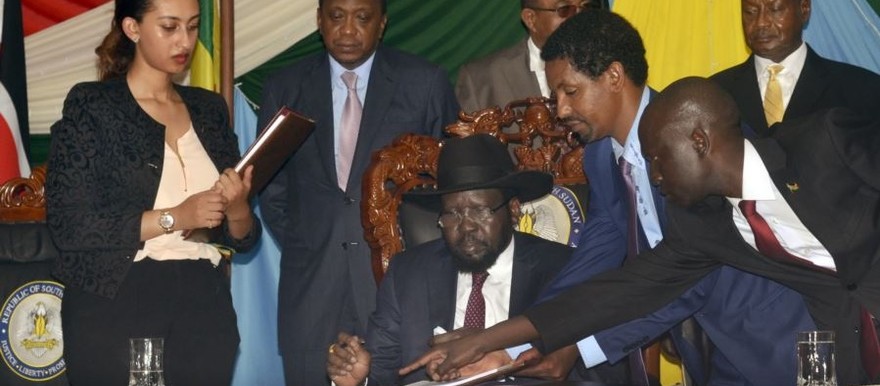'Focus on the Agreement' is a new daily segment broadcast on Radio Tamazuj to explain the contents of the peace agreement signed in August 2015 between South Sudan's warring parties. Many South Sudanese have never read the agreement or heard any detailed explanation of what it says. 'Focus on the Agreement' summarizes key parts of the deal in daily broadcasts, not translating every detail but highlighting the basics.
The Preamble
The first part of the agreement is the preamble, which explains that the peace deal is supported by the government, the armed opposition, the SPLM Former Detainees, representatives of other political parties, civil society groups, women's bloc, and religious leaders.
The agreement says that the conflict in South Sudan is “tragic” and needs to be stopped immediately, adding that the war has caused huge suffering and destruction, loss of life and economic disaster. Furthermore, the agreement acknowledges that mass violations of human rights have taken place during the war.
It adds that South Sudan needs to develop a culture of settling differences and misunderstandings peacefully rather than using force. In this regard, the agreement reaffirms the Cessation of Hostilities signed last year, urging all parties to commit to the ceasefire.
Also, the parties agreed on the transformation of the government into a federal system, which would require that higher levels of government give more power and resources to lower levels of government. They called federalism a “popular demand of the people of South Sudan.” The parties further admitted the need for reforms of institutions and the need to develop a new constitution, which would be the highest law of the land.
Finally, the parties to the agreement also thanked the IGAD mediators and members states, and the United Nations, for the different roles that they have played in supporting peace and protecting civilians.
This is a summary of the prologue of the agreement, which is the first part. The next section of the agreement is about the transitional government. Radio Tamazuj will bring you more information about this tomorrow.




